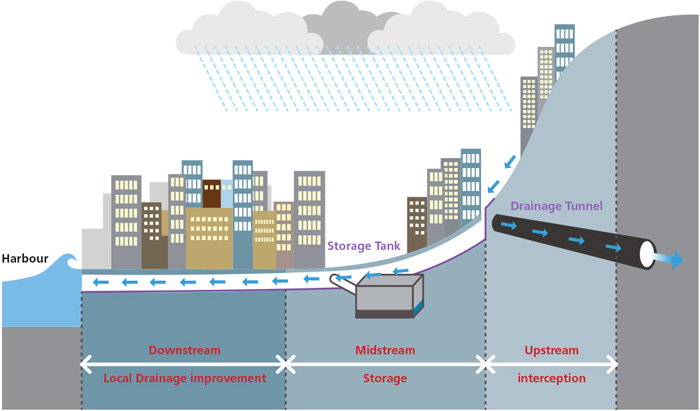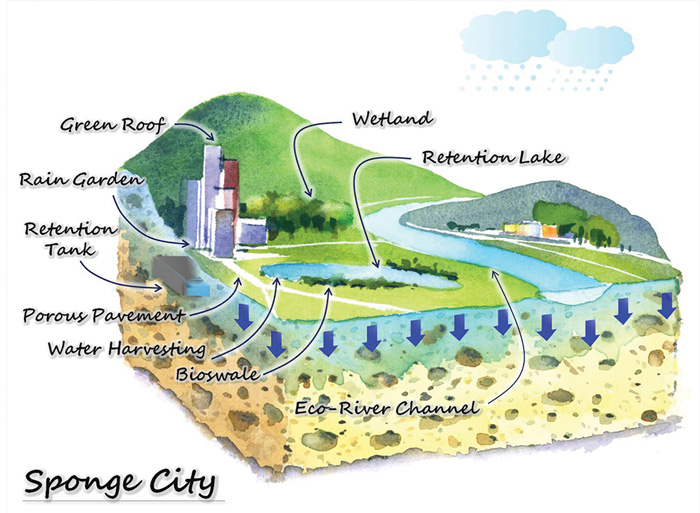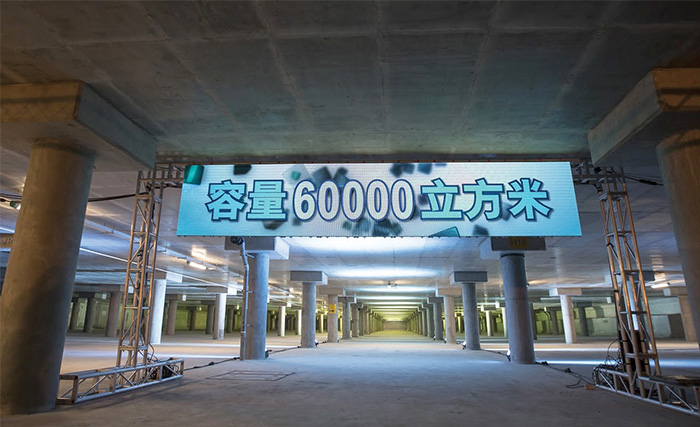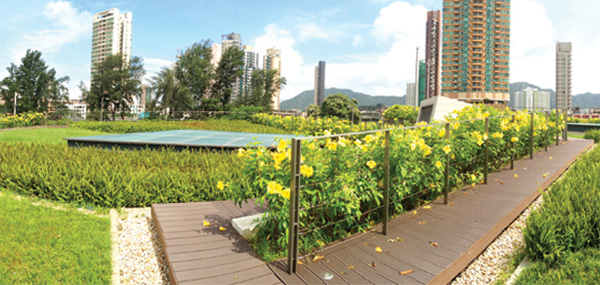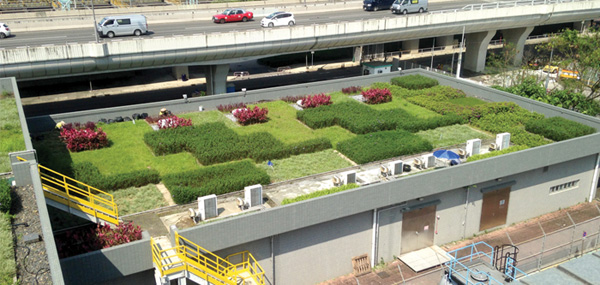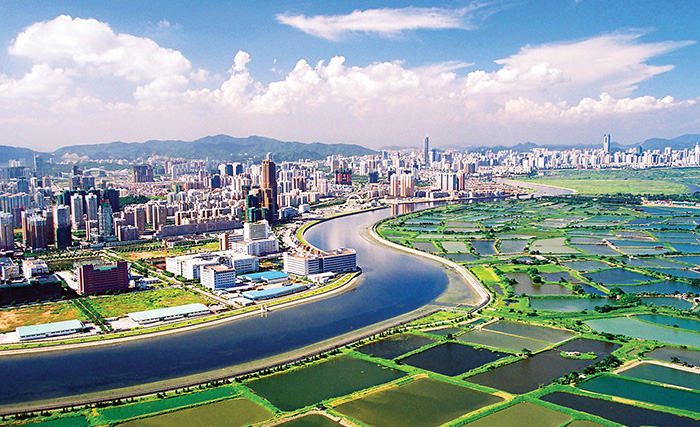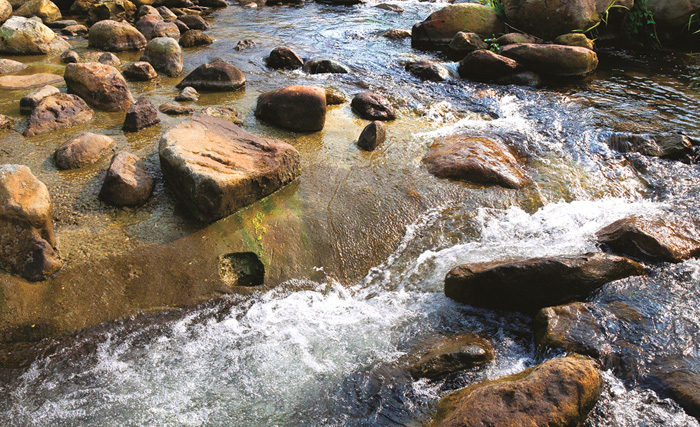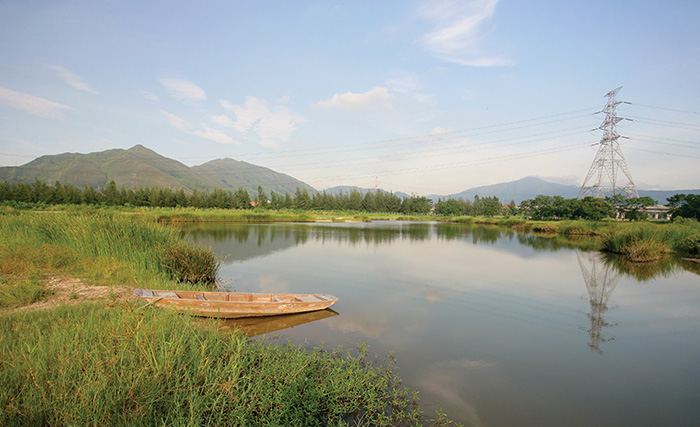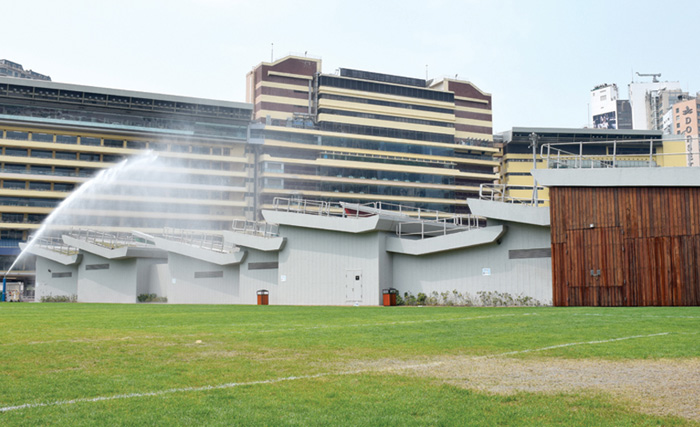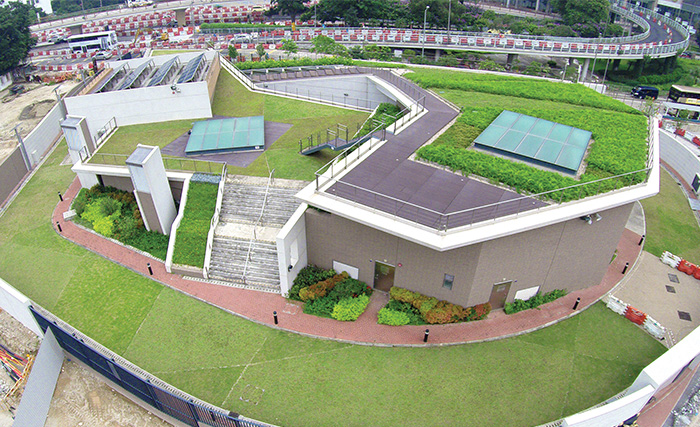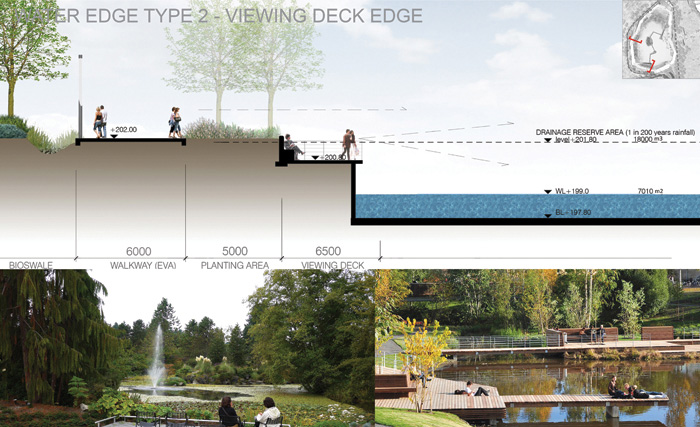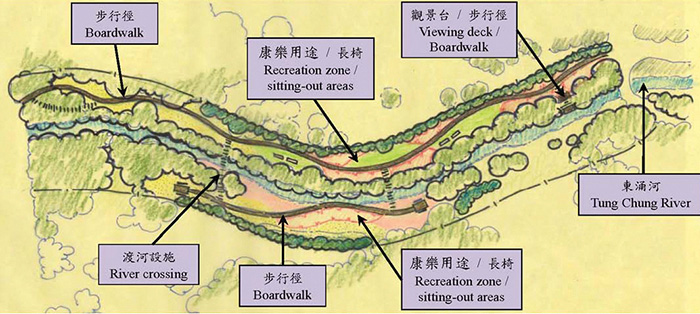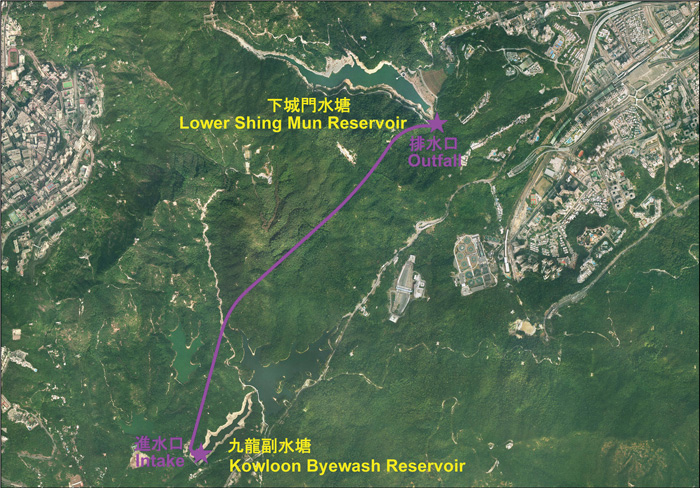Sponge City: Adapting to Climate Change
“Sponge City” is a modern stormwater management approach to help solve drainage problems, fully utilise land resources and promote sustainable development. To combat climate change, DSD encourages the “Sponge City” concept to be adopted in new developments for more effective drainage and rainwater reuse to enhance urban flood resilience by the principle of infiltration, retention, storage, purification, reuse and discharge. To implement the concept, DSD will revitalise water bodies, construct flood retention lakes, and apply sustainable drainage elements such as green roof, porous pavement in urban development.
Climate Change Mitigation and Adaption 
Hong Kong is on the common track of tropical cyclones. It is one of the cities with the highest rainfall in the Asia Pacific region with an average annual rainfall of about 2,400 millimetres. Under this climatic setting, Hong Kong always experienced substantial flooding in the past. Since the establishment of DSD in 1989, it has been striving to prevent flooding by adopting a Three-pronged approach: stormwater interception, flood storage, and drainage improvement, which are proven effective in mitigating the impact of rainstorm and flooding hazards, resulting in reducing the number of flooding blackspots in the city from 90 in 1995 to 7 in 2017.
As global climate change worsens, sea level rise will be accelerated, extreme torrential rains and storm surges will become more frequent. Hong Kong has to make more new attempts to tackle these challenges for flood prevention in the future. To support the sustainable development of Hong Kong and combat the climate change, in addition to jointly tackle the impact of climate change with other government departments by participating in the Inter-departmental Working Group on Climate Change, and reviewing the Drainage Master Plans (DMPs) of various districts, we adopt the “Sponge City” concept of “following the nature with resilience” when planning and constructing new drainage facilities. For instance, green roofs and porous pavements are included in DSD facilities to facilitate infiltration and reduce surface runoff. Leisure facilities with stormwater storage capacity, such as riverside parks and flood retention lakes, are also planned to reduce water flow and achieve the effect of flood storage and detention, while stormwater harvesting systems are in place to reuse rainwater to optimise water recycling across the city and enhance the flood resilience level of the city.
What is Sponge City?
Sponge City means that a city could function like a sponge that has great “resilience” to environmental changes and natural disaster. The stormwater could be absorbed, stored, infiltrated and cleaned during rainy days, and could be “released” and utilised as needed to enhance the ecological function of the city and reduce the flooding in the city.
Sponge City is a modern stormwater management approach which allows the city to collect rainwater and use the stored rainwater when needed. This concept advocates reducing urban development through natural drainage of rain to avoid largescale artificial channel improvement works.
The following projects vividly illustrate the result of the “Sponge City” concept in practice:
Underground Stormwater Storage Scheme
The principle of stormwater storage scheme is to temporarily store stormwater during heavy rainstorm in an underground tank, thus relieving the burden of downstream drainage system. When the stormwater in the downstream drainage system recedes, the stormwater stored in the tank will be pumped out to relieve storage space for the next rainstorm. Currently there are 3 underground stormwater storage tanks located at Tai Hang Tung, Sheung Wan and Happy Valley respectively.
The Happy Valley Underground Stormwater Storage Tank, commissioned this year, is the example of realising the “Sponge City” concept. Built under the Happy Valley Recreation Ground, the storage tank has a total capacity of 60,000 cubic metres for runoff storage during heavy rainstorms. This concept of engineering not only achieves low-impact urban development and land co-use concept, but also avoids the large-scale downstream drainage improvement project. This is also the first flood prevention project in Hong Kong to combine the use of Movable Weir and Supervisory Control and Data Acquisition (SCADA) System.
Green Roof and Vertical Greening
We have built a total of 30,000 square metres of green roofs and vertical greening within our drainage facilities including sewage treatment works as well as sewage and stormwater pumping stations, and continued to build 4,000 square metres of green roofs and vertical greening each year.
River Revitalisation
For some river training works such as the completed Ho Chung River and Lam Tsuen River, and the on-going projects like Shenzhen River and Kai Tak River, in addition to upgrading drainage capacities, when designing the river improvement works, greening, ecological conservation and water landscape elements have been incorporated into the projects, such as preserving the rivers’ natural habitat, installing fish shelters, deflectors and boulders in the riverbed to improve microhabitats and biodiversity. For the Shenzhen River Regulation Project, a flood retention lake will be constructed on Shenzhen River not only to provide a habitat for wildlife that greatly enhances the river's ecological value but also to help store floodwater, thus keeping the downstream water level under control.
The aim of the Yuen Long Bypass Floodway is to mitigate flooding in Yuen Long Town and its peripheral village areas by intercepting 40% of the runoff in the Yuen Long catchment, and the intercepted flow is diverted to the downstream of Kam Tin River. As some fishponds and agricultural land were affected during the construction of Yuen Long Bypass Floodway, in order to compensate for the ecological losses, we converted 3 abandoned fishing ponds into engineered wetland. The engineered wetland covers an area of 70,000 square metres (equivalent to 10 standard soccer fields), providing a freshwater habitat for wild birds, amphibians (frogs) and dragonflies that depend on the wetland as well as serving as a purification and temporary storage area for stormwater.
Rainwater Harvesting Systems
We have also implemented Rainwater Harvesting Systems at Lai Chi Kok Drainage Tunnel and Happy Valley Underground Stormwater Storage Scheme. The harvested rainwater can be used for irrigation, toilet flushing and cleaning after suitable treatment as far as possible to save precious water resources.
Kowloon City No.1 Sewage Pumping Station
Located at Kai Tak, Kowloon City No.1 Sewage Pumping Station is designed to incorporate a number of green building concepts, including green roofs, porous pavement, rain gardens and water harvesting facilities. It is the first government infrastructure to be bestowed the highest Final Platinum Rating under BEAM Plus Assessment for New Buildings.
Looking Forward
Apart from embodying the concept of “Sponge City” in existing drainage facilities, in the future, DSD will also actively introduce design elements with “sponge” effect to the new projects.
The First Flood Retention Lake in Hong Kong
In the plan of the Development of Anderson Road Quarry Site, we will construct the first flood retention lake in Hong Kong. The flood retention lake serving flood control, leisure and rainwater harvesting functions. It will store stormwater during heavy rains to reduce the flood risk downstream, and some of the lake water will be used as irrigation and other non-potable purposes after suitable treatment. This project also provide scenic waterscape environment to residents for public enjoyment.
The First River Park in Hong Kong
With the Tung Chung New Town extension under way, the Government has seized the opportunity with plans to revitalise a section of the existing Tung Chung River, upgrading its drainage capacity and transforming it into the first river park in Hong Kong. The river park is poised to be green and water-friendly for residents who enjoy water sports and natural sceneries.
Inter-Reservoirs Transfer Scheme (IRTS)
We are also planning to construct a water tunnel with a total length of about 2.8 kilometres connecting Kowloon Byewash Reservoir and Lower Shing Mun Reservoir, which will transfer overflow of Kowloon Group of Reservoirs to Lower Shing Mun Reservoir. Apart from improving the drainage capacity of West Kowloon effectively and reducing flood risk, the scheme will supply an estimated 2.5 million cubic metres of extra raw water yearly on average to achieve the goals of both flood prevention and water conservation.
To combat climate change, DSD will continue to enhance Hong Kong’s flood prevention capacity and the reuse of water resources. While harvesting stormwater and consewing the nature, weendearour to improve the citizens' living environment in tune with the surrounding natural and heritage setting.




